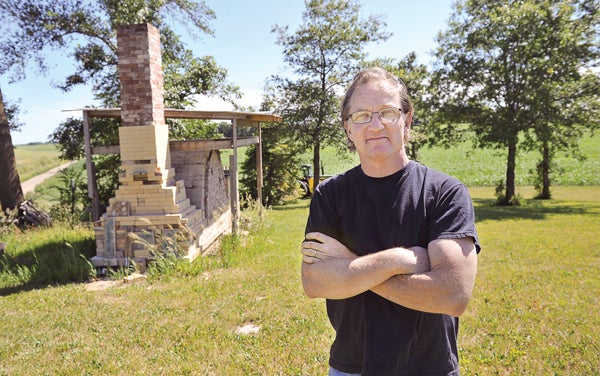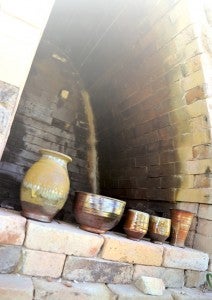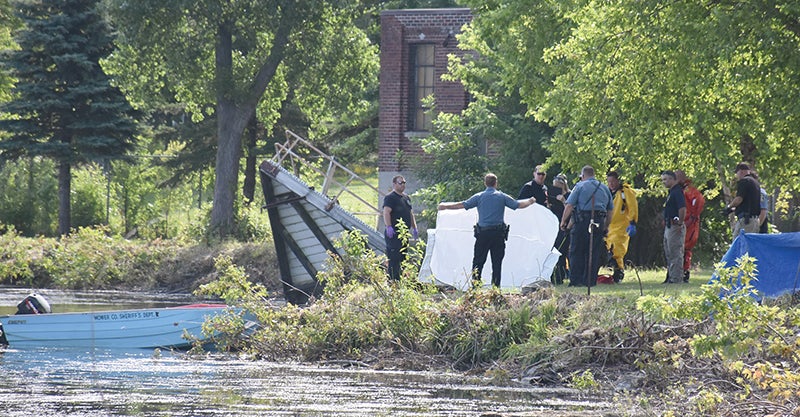A hand-thrown hobby
Published 7:00 pm Saturday, June 16, 2012

John Sullivan every fall fires up his homemade kiln just northwest of Austin, firing the pottery he and friends create. - Eric Johnson/photodesk@austindailyherald.com
Art teacher fires pottery in a kiln he built himself
Austin resident John Sullivan never let go of a hobby he picked up from art class.
“I learned how to make pottery at high school here in Austin,” he said.
The craft quickly took hold, and after 30 years of off-and-on experience in pottery, Sullivan is still with it. In fact, he has taken it a step further: he now fires his work in a wood-fire kiln that he built himself.
Sullivan graduated Winona State with a bachelor’s degree in art. While he intended to go into teaching, Sullivan got a job in Hayward in 1989 as a production potter for Heritage Designs, a company based in the Twin Cities. The position had him mass-producing handmade pottery.
“Basically, it’s throwing on the wheel for eight hours a day,” Sullivan said. “You learn to make the same shape over and over again a thousand times.”
Sullivan specialized in the upper portions of goblets, which would then be attached to stems and shipped out by the hundreds or thousands for use in renaissance fairs all over the country.
In 1991, he left the company to substitute teach, and soon became a full-time teacher. He taught at Southland for a while, and later Ellis Middle School. Currently, Sullivan teaches elementary art at Southgate Elementary and Banfield Elementary.
He said he has no plans to make ceramics his full-time occupation.
“It’s definitely a hobby right now,” he said. “I’m not looking at a career change.” In fact, at one point Sullivan had nearly gone the opposite direction.
“I kind of let pottery go for a while because I was immersing myself in teaching,” he said. That left little time to work on ceramics, he said.
Then a fresh source of motivation came about. In 2000, Sullivan got an opportunity to apprentice at St. John’s University in Collegeville. There he met Richard Bresnahan, the university’s artist in residence, who Sullivan said had been there more than 25 years.
“This guy is the premier potter in the United States,” he said.
Bresnahan is one of the only Westerners to ever be deemed a master potter in Japan, and used the uncommon technique of wood-firing. Sullivan said it was an honor to work with him, and the two became friends.
“That really kind of pushed me to go into wood-firing, which is something I really always wanted to do since college,” he said.
Right now, Sullivan fires in the kiln once a year. It can hold up to about 400 pieces of pottery, depending on their sizes. He makes, trims, glazes and sets aside pieces at home throughout the year, then collects them and fires once he has enough.
Usually, he makes bowls, cups, mugs and glasses. He hopes to make a series of teapots next. Sullivan said these are some of his favorite items because they are easy and fun to make, and people like them.
The time it takes to fire pottery depends on the size and type of kiln. Sullivan’s currently takes about 30 hours; a several-person job, since the process requires sleepless attention the whole time.
“Once you get up to 600 degrees, you have to stoke it about every 10 minutes,” he said. He estimates there are fewer than 100 wood-fire kilns in the state.
Bresnahan’s kiln at St. John’s University, to compare, is 87 feet long and can hold up to 1,500 pieces. It takes 10 days to fire. On the other hand, Sullivan’s friend in Faribault has a small, quick kiln that takes just eight hours.
Part of the challenge of Sullivan’s art is logistical. Lots of pottery requires a lot of storage space.
“I can’t keep everything I make because my house would literally be full of them,” he said. He used to give or throw them away, but now he holds yard sales once or twice a year instead.
“I’m not doing it as a business at this point,” he said. Instead, Sullivan said his goal was to get people to pay attention to wood-fired ceramics and “really make some beautiful stuff that people like.”
While department stores carry mass-produced ceramics today, 250 years ago, handmade, wood-fired works were all there were, he said. His pieces reminisce of that time.
“That bowl should have more meaning than going down to Target and buying a bowl,” he said.






